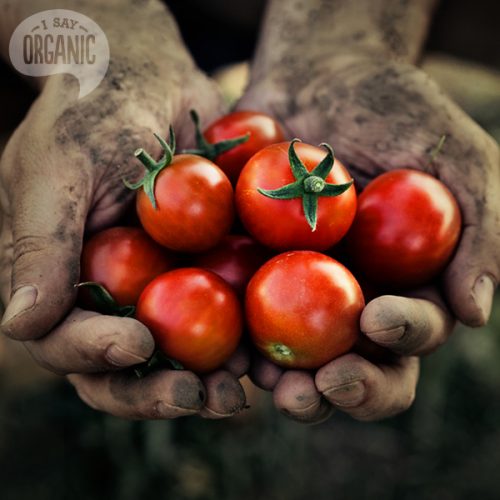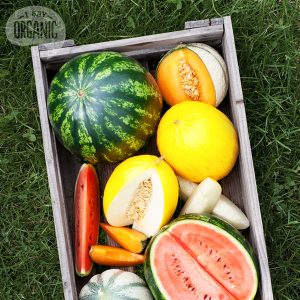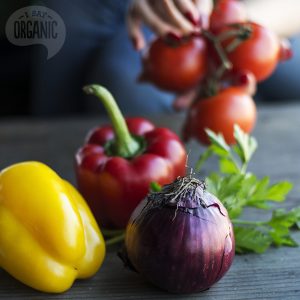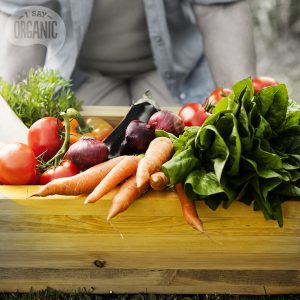TBI Blogs: A Beginner’s Guide to Choosing Fresh and Healthy Fruits & Vegetables
Navigating the maze of organic foods can be daunting. Here are four easy steps to help you choose fresh and healthy fruits & vegetables.

Navigating the maze of organic foods can be daunting. Here are four easy steps to help you choose fresh and healthy fruits & vegetables.
We live in a country where arrays of colourful vegetables and fruits line every marketplace. We’ve grown up watching our mums effortlessly pick fresh, delicious vegetables and fruits for us. At times, when mum wasn’t around, we’ve removed wilted greens from the fridge and wondered where it all went wrong.
And when we finally shopped for ourselves or our families, we realised that picking the right kind of veggies and fruits is an art.
Is there a shortcut?
Well, yes. To begin with, choosing organic produce immediately ensures that you’re picking vegetables and fruits that are cleaner, healthier and better for you.
Going organic means that you avoid the chemicals and pesticides that are used in the growing of regular produce.
But there are other steps you can also take to make sure you’re choosing the best produce possible.

The First Step: Go Seasonal
Picking seasonal veggies and fruits mean that you’re eating the way nature intended. This also means that you’re eating produce that is at its freshest and healthiest, as it is sold soon after it is harvested.

The Second Step: Use your Eyes
Don’t go for glossy or shiny produce. Size really doesn’t matter either. Medium-sized vegetables and fruits that are colourful but not Photoshop-worthy are your best bet. Leafy veggies should be a fresh green that is soothing to the eyes; without yellowing on the edges or outsides.
Bonus Tip: Don’t be afraid of speckles and spots. That just means your vegetables and fruits were grown as naturally as possible and are ripening naturally as well. Bananas, in particular, are always more flavourful when they are slightly speckled.

The Third Step: Use your Sense of Touch
‘Firm’ should be your favorite word here. Apples, tomatoes, bananas and cabbage are all better when they are firm; please, go ahead and gently squeeze the merchandise. Leafy veggies should be crisp and springy to the touch. Fruit should be firm as described in the cases above, or tender in the case of fruits like pears. You must also watch out for the difference between firm and ripe, and hard and unripe. Melons, pumpkins and other watery veggies like bottle gourd should ideally be heavy, with a full-to-bursting kind of feeling.

The Fourth Step: Your Sense of Smell
This is probably one of the most important tests for checking the freshness of produce, yet it is a skill that takes time to develop. While it is easy to distinguish the smells of produce like bananas and coriander, which have a strong aroma; the same is less possible with uncut apples. However, a good rule of thumb should be to choose produce that has a fragrant smell – fresh in the case of produce like melons, and earthy in the case of produce like potatoes. Produce that has no smell or smells like its packaging, is not the best option.
Bonus Tip: If you’re buying produce in advance, choose fruits and veggies with fainter aromas; these will ripen in time.
Your cheat words for choosing produce:
Firm, green, fresh, crisp, smells good, colourful, smooth, heavy, uniform and natural.
Signs to watch out for:
- Fruit that’s too soft in spots, where you can feel the pits from the skin should be avoided.
- Dark spots that are too wide or too many in number. Bruises and inflicted dents are also best avoided.
- Produce that is too hard – this might not ripen in time, or at all.
- Any blackening or yellowing that isn’t part of the produce’s natural colour spectrum.
Like this story? Have something to share? Email: [email protected], or join us on Facebook and Twitter (@thebetterindia). To get positive news on WhatsApp, just send ‘Start’ to 090 2900 3600 via WhatsApp.
This story made me
- 97
- 121
- 89
- 167
Tell Us More
We bring stories straight from the heart of India, to inspire millions and create a wave of impact. Our positive movement is growing bigger everyday, and we would love for you to join it.
Please contribute whatever you can, every little penny helps our team in bringing you more stories that support dreams and spread hope.




















